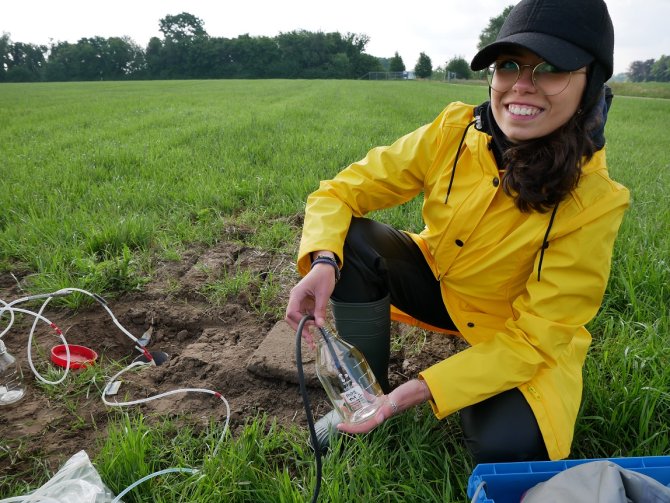
Project
Formation and fate of micropollutant transformation products in subsurface water systems
Because of climate change, the Netherlands is currently facing seasonal problems with freshwater provision. Alternative water sources, such as surface water and wastewater treatment plant effluents, are being infiltrated to replenish aquifers and store water. However, micropollutants are widespread in the environment, including groundwater (GW) and surface water. The infiltration of alternative water sources may introduce more micropollutants into aquifer systems, threatening the quality of the drinking water produced. Furthermore, there is increasing concern about the underground formation, through microbial processes, of micropollutant transformation products (TPs), which can be more harmful than the parent compounds.
Technological challenge
During the travel time in the subsurface and once in GW systems, the fate of micropollutants is affected by biotic and abiotic processes. Microorganisms can biodegrade the contaminants changing their structure and forming TPs or, when the conditions are most favourable, they may be able to complete mineralization. A wide range of parameters affects biodegradation and TP formation, including
redox conditions, dissolved organic carbon (DOC) availability and contaminant
concentration. The presence of micropollutants and TPs in drinking water sources is most unwanted. TPs can, indeed, be more recalcitrant and mobile than the parent compounds, but the majority of those present in GW are still unknown. Even though GW systems have anaerobic and oligotrophic conditions that do not promote biodegradation, by studying the conditions that lead to different TPs formation, the process of mineralization can be stimulated. The composition of the microbial population plays an important role in biodegradation and, by studying it in correlation to the environmental conditions, we can better understand the metabolic pathways of micropollutants.
In the present research, laboratory experiments and field investigation are closely interconnected to study TPs’ fate in subsurface water systems from a fundamental and applied perspective. In the lab, the influence of redox conditions and microbial diversity on TPs formation is assessed through batch experiments and DNA analyses. Sampling and data treatment of Dutch reuse water systems are performed to identify currently unknown TPs and their fate under real conditions, where subsurface or artificial infiltration is applied. Data analysis is done through state-of-the-art software for TPs identification. The study provides insights for the safer production, storage and reuse of freshwater.
